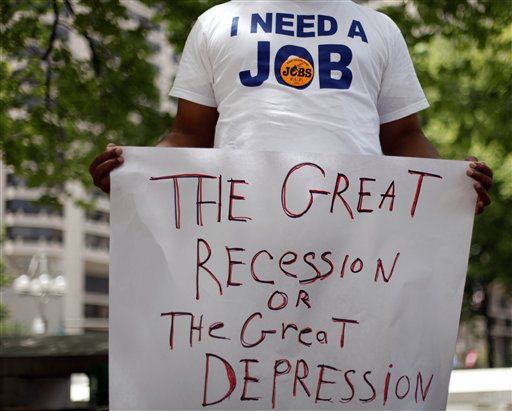First impression of the August non-farm labor report from the government’s Bureau of Labor Statistics: It’s not as bad as it could be. The top-line stats are unpleasant: Payroll employment dropped by 54,000 in August and the unemployment rate rose from 9.5 percent to 9.6 percent. But the drop is more than accounted for by the removal of 114,000 Census workers from the rolls. Private-sector employment, according to the government, rose by 67,000.
The private-sector numbers are mildly encouraging — if that trend continues, September’s numbers should show positive overall payroll growth. But in the meantime, someone at the BLS is taking extra-special pains to encourage us not to get too agitated.
Here’s the government’s first paragraph. (Italics mine.)
Nonfarm payroll employment changed little (-54,000) in August, and the unemployment rate was about unchanged at 9.6 percent, the U.S. Bureau of Labor Statistics reported today. Government employment fell, as 114,000 temporary workers hired for the decennial census completed their work. Private-sector payroll employment continued to trend up modestly (+67,000).
Of course, another way to say “almost unchanged” in this context is “rose.” But I guess that was unpalatable. The pattern is repeated throughout the report. Civilian labor participation rate: “essentially unchanged.” Number of people marginally attached to the labor force: “little changed.”
Nothing to see here, move along, move along!
But maybe the BLS is right to emphasize how little has changed — there’s not much to take encouragement from in this report, but it also doesn’t indicate a sharp deterioration in the labor market. Yes, two indicators that we usually scour for signs of a burgeoning economy — the number of hours worked per week, and temp hires — barely budged up at all, but the BLS also made significant positive revisions to the June and July payroll numbers: June went from -221,000 to -175,000; July, from -131,000 to -54,000. So the summer hasn’t been quite as bad as we thought it was, especially when one takes into account Census hiring.
And yet:
- The number of persons employed part-time for economic reasons (sometimes referred to as involuntary part-time workers) increased by 331,000 over the month to 8.9 million.
- In August, 42.0 percent of unemployed persons had been jobless for 27 weeks or more.
- The seasonally adjusted U-6 measure of “Total unemployed, plus all persons marginally attached to the labor force, plus total employed part time for economic reasons, as a percent of the civilian labor force plus all persons marginally attached to the labor force”: 16.7 percent.
That last number has hardly moved at all this year, and that’s a case where “almost unchanged” translates as just plain lousy.


